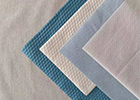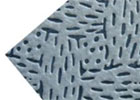Viscose Non-Woven Fabric Buying Guide: Understanding Applications and Specifications
|
Introduction to Viscose Non-Woven Fabric Types of Viscose Non-Woven Fabric Applications of Viscose Non-Woven Fabric Factors to Consider when Buying Viscose Non-Woven Fabric |
Introduction to Viscose Non-Woven Fabric
Viscose non-woven fabric is a versatile material that is widely used in a variety of applications. It is made from cellulose fibers derived from wood pulp, making it a sustainable choice. This fabric has gained popularity due to its unique properties and the benefits it offers in various industries. Here, we will explore what viscose non-woven fabric is, its advantages, and its applications.
What is Viscose Non-Woven Fabric?
Viscose non-woven fabric is a type of fabric that is manufactured through a process known as wet-laid or spunlaid. It is composed of short fibers that are bonded together using adhesives or heat. This fabric has a soft and smooth texture, making it suitable for a wide range of uses.
Advantages and Applications of Viscose Non-Woven Fabric
Viscose non-woven fabric offers several advantages that make it a preferred choice in various industries.
Firstly, it is highly absorbent, making it suitable for applications in the hygiene industry. It is commonly used in the production of disposable wipes, diapers, and feminine hygiene products. The high absorbency of viscose non-woven fabric ensures efficient moisture management and enhances comfort for the users.
Additionally, viscose non-woven fabric is known for its excellent drape and drapability, making it ideal for applications in the apparel industry. It can be easily molded into various shapes and can provide a comfortable and breathable feel when used in clothing and accessories.
The fabric is also widely used in the medical field, especially in wound dressing and surgical gowns. Viscose non-woven fabric has excellent biocompatibility and softness, ensuring comfort and minimizing the risk of irritation.
Furthermore, it finds applications in the automotive industry, particularly in interior components such as headliners and door panels. The fabric's ability to provide acoustic and thermal insulation properties makes it an ideal choice for enhancing the overall comfort of the vehicle.
In the home furnishing industry, viscose non-woven fabric is utilized in furniture upholstery, wall coverings, and mattress production. Its durability, versatility, and aesthetic appeal make it an excellent choice for enhancing the visual and tactile experience of home interiors.
To sum up, viscose non-woven fabric offers numerous advantages and has diverse applications in various industries. Its absorbency, softness, drapability, and biocompatibility make it a versatile material suitable for hygiene products, apparel, medical supplies, automotive components, and home furnishings. Consider the unique properties of viscose non-woven fabric when exploring options for your specific needs, ensuring you choose a material that meets your requirements and enhances the quality of your products.

Types of Viscose Non-Woven Fabric
When it comes to viscose non-woven fabric, there are two main types that you need to be familiar with. These types are spunlaced and needle-punched viscose non-woven fabric. Understanding the differences between these two varieties can help you make an informed decision when purchasing this versatile material for your specific applications.
Spunlaced Viscose Non-Woven Fabric
Spunlaced viscose non-woven fabric is a type of fabric that is created by entangling the viscose fibers using high-pressure water jets. This process creates a fabric with a smooth and soft texture, making it ideal for applications in the hygiene industry and the production of disposable wipes, diapers, and feminine hygiene products. Spunlaced viscose non-woven fabric is highly absorbent, ensuring efficient moisture management and enhancing comfort for users.
Needle-punched Viscose Non-Woven Fabric
Needle-punched viscose non-woven fabric, on the other hand, is manufactured by mechanically interlocking the fibers using barbed needles. This process creates a fabric with a higher density and structural integrity, making it suitable for applications in the medical field and automotive industry. Needle-punched viscose non-woven fabric is known for its excellent biocompatibility and softness, making it ideal for wound dressing, surgical gowns, and interior components in vehicles such as headliners and door panels.
When considering which type of viscose non-woven fabric to choose, it is important to evaluate your specific requirements and the intended application. If absorbency and a soft texture are important factors, then spunlaced viscose non-woven fabric would be the preferred choice. However, if structural integrity and biocompatibility are crucial, then needle-punched viscose non-woven fabric would be a better option.
In addition to understanding the types of viscose non-woven fabric, it is also important to consider the specifications of the fabric that will best suit your needs. These specifications include the weight, thickness, and width of the fabric. The weight and thickness will determine the strength and absorbency of the fabric, while the width will determine the suitability for your specific application.
When purchasing viscose non-woven fabric, it is advisable to consult with a reputable supplier who can provide guidance on the best type and specifications for your requirements. By understanding the types and specifications of the fabric, you can make an informed decision and ensure that you choose a material that not only meets your needs but also enhances the quality of your products.
In conclusion, there are two main types of viscose non-woven fabric: spunlaced and needle-punched. Each type has its own characteristics and is suitable for specific applications in various industries. Understanding the differences between these types and considering the specifications of the fabric will help you determine the best choice for your specific needs. Consult with a reputable supplier to ensure that you purchase a viscose non-woven fabric that meets your requirements and enhances the quality of your products.
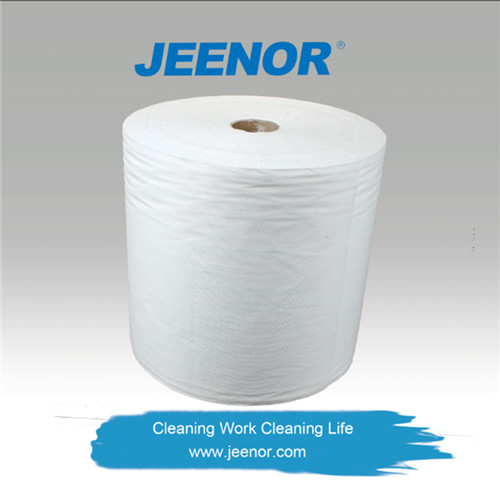
Applications of Viscose Non-Woven Fabric
Viscose non-woven fabric finds its applications in various industries due to its unique properties and versatility. Understanding these applications can help you make an informed decision when purchasing this fabric for your specific needs. Here, we will explore the applications of viscose non-woven fabric in the textile industry and the medical industry.
Viscose Non-Woven Fabric in the Textile Industry
In the textile industry, viscose non-woven fabric is widely used for its soft texture, absorbency, and drapability. It is commonly used in the production of apparel, home furnishings, and personal care products. The fabric's smooth and breathable nature makes it ideal for creating comfortable clothing such as shirts, dresses, and innerwear. Additionally, it can be used as lining material to enhance the quality and durability of garments. In the home furnishings sector, viscose non-woven fabric is utilized for upholstery, curtains, beddings, and table linens due to its luxurious appearance and excellent moisture management properties. Furthermore, the fabric is also employed in personal care products such as facial masks, wet wipes, and cosmetic applicators for its ability to provide a gentle and hygienic touch.
Viscose Non-Woven Fabric in the Medical Industry
The medical industry extensively relies on viscose non-woven fabric for its exceptional properties such as biocompatibility, absorbency, and strength. It is commonly used in healthcare settings for various applications including wound dressings, surgical gowns, and healthcare wipes. Viscose non-woven fabric's ability to absorb fluids and provide a sterile environment makes it an ideal material for wound dressings, ensuring proper healing and prevention of infection. Surgical gowns made from this fabric offer comfort, breathability, and protection to medical professionals during surgical procedures. Additionally, it is used for the production of healthcare wipes that are essential for maintaining hygiene and preventing the spread of infections in medical facilities. Viscose non-woven fabric is also employed in the manufacturing of sanitary napkins, diapers, and adult incontinence products due to its remarkable absorption capacity and softness.
When purchasing viscose non-woven fabric, it is important to consider the specifications that best suit your requirements. The weight, thickness, and width of the fabric play a crucial role in determining its strength, absorbency, and suitability for your specific application. If you require a fabric with high absorbency and a soft texture, opt for lighter weights and thinner thickness. On the other hand, if structural integrity and biocompatibility are essential, consider selecting heavier weights and thicker thickness. Additionally, the width of the fabric should be chosen according to the dimensions required for your specific application.
To ensure that you source high-quality viscose non-woven fabric, it is advisable to consult with a reputable supplier who can provide guidance on the best type and specifications for your requirements. By understanding the applications of viscose non-woven fabric and considering the appropriate specifications, you can make an informed decision and ensure that you choose a material that meets your needs and enhances the quality of your products.
In conclusion, viscose non-woven fabric finds diverse applications in the textile industry and the medical industry. Its soft texture, absorbency, and drapability make it a suitable choice for clothing and home furnishings. Meanwhile, its biocompatibility, absorbency, and strength make it an essential material in the medical industry for wound dressings, surgical gowns, and healthcare wipes. When purchasing this fabric, carefully consider the specifications that align with your requirements to ensure optimal performance. Consulting a reputable supplier will further aid you in finding the right type and specifications of viscose non-woven fabric for your specific needs.

Factors to Consider when Buying Viscose Non-Woven Fabric
Weight and thickness specifications
When purchasing viscose non-woven fabric, it is crucial to consider the weight and thickness specifications that best suit your application. The weight of the fabric determines its strength and durability. Lighter weight fabrics are suitable for applications requiring high absorbency and a soft texture, such as facial masks, wet wipes, and clothing. On the other hand, heavier weight fabrics are ideal for applications where structural integrity and biocompatibility are essential, such as wound dressings and surgical gowns.
The thickness of the fabric also plays a significant role in its performance and suitability for different applications. Thinner fabrics are preferred for applications where a gentle and hygienic touch is required, such as cosmetic applicators and personal care products. Thicker fabrics, on the other hand, offer enhanced absorption capacity and durability, making them suitable for products like diapers and adult incontinence items.
Moisture absorption and breathability
Viscose non-woven fabric is known for its excellent moisture management properties, which makes it highly absorbent and breathable. When buying this fabric, it is essential to consider the level of moisture absorption required for your specific application. Fabrics with higher absorption capacity are ideal for wound dressings, healthcare wipes, and products that come into direct contact with fluids. On the other hand, fabrics with lower absorption capacity may be suitable for applications that require moisture management, such as apparel and home furnishings.
Breathability is another crucial factor to consider when buying viscose non-woven fabric. Fabrics that offer breathability allow air circulation and moisture evaporation, which is particularly important for applications like surgical gowns and clothing. Breathable fabrics enhance comfort and prevent the build-up of heat and sweat, ensuring a comfortable experience for the wearer.
Consulting a reputable supplier
To ensure the successful purchase of high-quality viscose non-woven fabric, it is advisable to consult with a reputable supplier. A trusted supplier will have the expertise and experience to guide you in selecting the right type and specifications for your specific needs. They can provide valuable insights into the different options available, assist in determining the most suitable weight, thickness, and width, and ensure that the fabric meets industry standards and regulations.
By considering the weight and thickness specifications, as well as the moisture absorption and breathability properties of the fabric, you can make an informed decision that aligns with your requirements. Consulting a reputable supplier will further enhance your buying experience by providing expert guidance and ensuring the acquisition of high-quality viscose non-woven fabric that enhances the quality of your products.
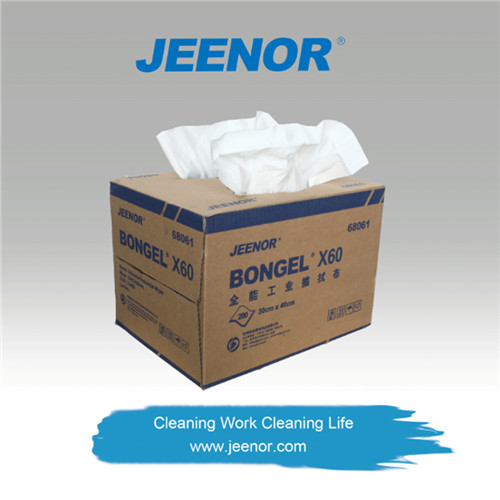
Choosing the Right Viscose Non-Woven Fabric Supplier
When it comes to purchasing viscose non-woven fabric, finding a reliable supplier is of utmost importance. A reputable supplier can provide you with high-quality fabric that meets your specific requirements. Here, we will discuss the factors to consider when choosing a supplier and the importance of quality assurance and certifications.
Finding a reliable supplier
To ensure a successful purchase of viscose non-woven fabric, it is crucial to find a supplier with a solid reputation in the industry. Look for suppliers that have been in the business for a considerable amount of time and have a proven track record of delivering quality products. Checking customer reviews and testimonials can also give you insight into their reliability and customer satisfaction levels.
Additionally, consider the supplier's manufacturing capabilities and production capacity. A supplier with advanced machinery and a large production capacity will be able to accommodate your needs efficiently and ensure a steady supply of fabric.
Quality assurance and certifications
When buying viscose non-woven fabric, it is essential to prioritize quality assurance. Look for suppliers that have established quality control systems in place to ensure the consistency and reliability of their products. This includes conducting rigorous testing procedures at various stages of production to check for durability, strength, absorbency, and other relevant factors.
Certifications are also an important aspect to consider. Suppliers that hold certifications such as ISO 9001 (quality management system) and ISO 14001 (environmental management system) demonstrate their commitment to quality and sustainability. These certifications indicate that the supplier follows international standards and practices, ensuring that you receive fabric of the highest quality.
Understanding Applications and Specifications
To make an informed decision when purchasing viscose non-woven fabric, it is crucial to understand its applications and specifications. Consider the specific needs of your intended use and choose the fabric weight and thickness accordingly.
Lightweight fabrics are suitable for applications that require high absorbency and a soft texture, such as facial masks and wet wipes. On the other hand, heavier weight fabrics are ideal for products that require structural integrity and biocompatibility, such as wound dressings and surgical gowns.
Moisture absorption and breathability are also important factors to consider. Fabrics with higher absorption capacity are suitable for wound dressings and healthcare wipes, while those with lower absorption capacity may be suitable for moisture management in apparel and home furnishings. Breathability is crucial for applications like surgical gowns and clothing to ensure comfort and prevent the build-up of heat and sweat.
By considering these factors and consulting a reputable supplier, you can make an informed decision that aligns with your specific requirements. A trusted supplier can guide you in selecting the right type and specifications of viscose non-woven fabric, ultimately enhancing the quality of your products.
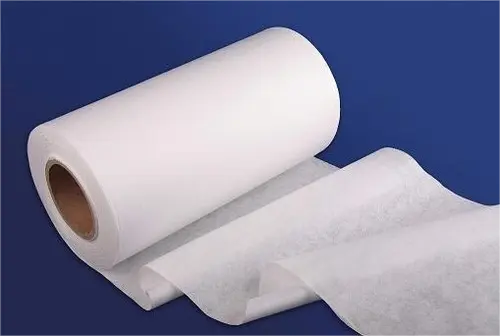
Conclusion
In conclusion, branding is crucial for businesses of all sizes to differentiate themselves from competitors and stay relevant. It involves crafting a unique identity that showcases your values, story, brand promise, and other assets. By leveraging these aspects, you can create a strong and reliable brand identity that resonates with your target audience.
When it comes to purchasing viscose non-woven fabric, finding a reliable supplier is essential. You should look for suppliers with a solid reputation in the industry, a proven track record of delivering quality products, and positive customer reviews. Additionally, consider the supplier's manufacturing capabilities and production capacity to ensure they can meet your needs efficiently.
Quality assurance and certifications are also important factors to consider. Look for suppliers that have established quality control systems and hold certifications such as ISO 9001 and ISO 14001. These certifications indicate that the supplier follows international standards and practices, ensuring the highest quality fabric.
Understanding the applications and specifications of viscose non-woven fabric is crucial for making an informed decision. Consider the specific needs of your intended use and choose the fabric weight and thickness accordingly. Lightweight fabrics are suitable for applications that require high absorbency and a soft texture, while heavier weight fabrics are ideal for products that require structural integrity. Moisture absorption and breathability are also important factors to consider.
In summary, by considering these factors and consulting a reputable supplier, you can make an informed decision that aligns with your specific requirements. A trusted supplier can guide you in selecting the right type and specifications of viscose non-woven fabric, ultimately enhancing the quality of your products.
For tips on purchasing viscose non-woven fabric, it is important to conduct thorough research on the supplier before making a decision. Check their reputation in the industry, customer reviews, and certifications they hold. Ensure they have quality control systems in place and can meet your production needs. Consider the specific applications and specifications of the fabric, such as weight, thickness, absorption capacity, and breathability. Consulting with a trusted supplier can provide valuable insights and guidance in the purchasing process.
In conclusion, by understanding the importance of branding and conducting thorough research when purchasing viscose non-woven fabric, you can differentiate your business and ensure the quality of your products.




